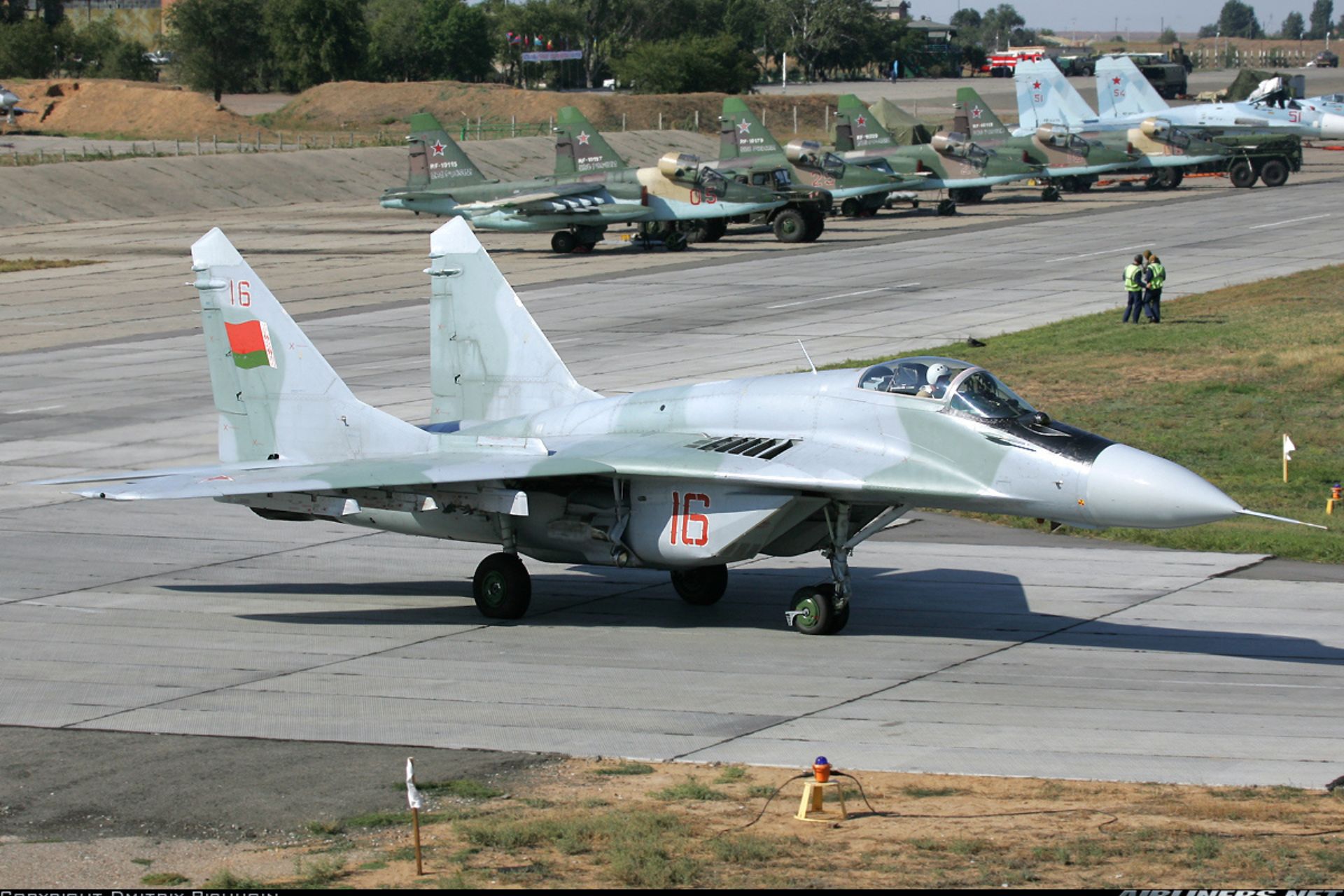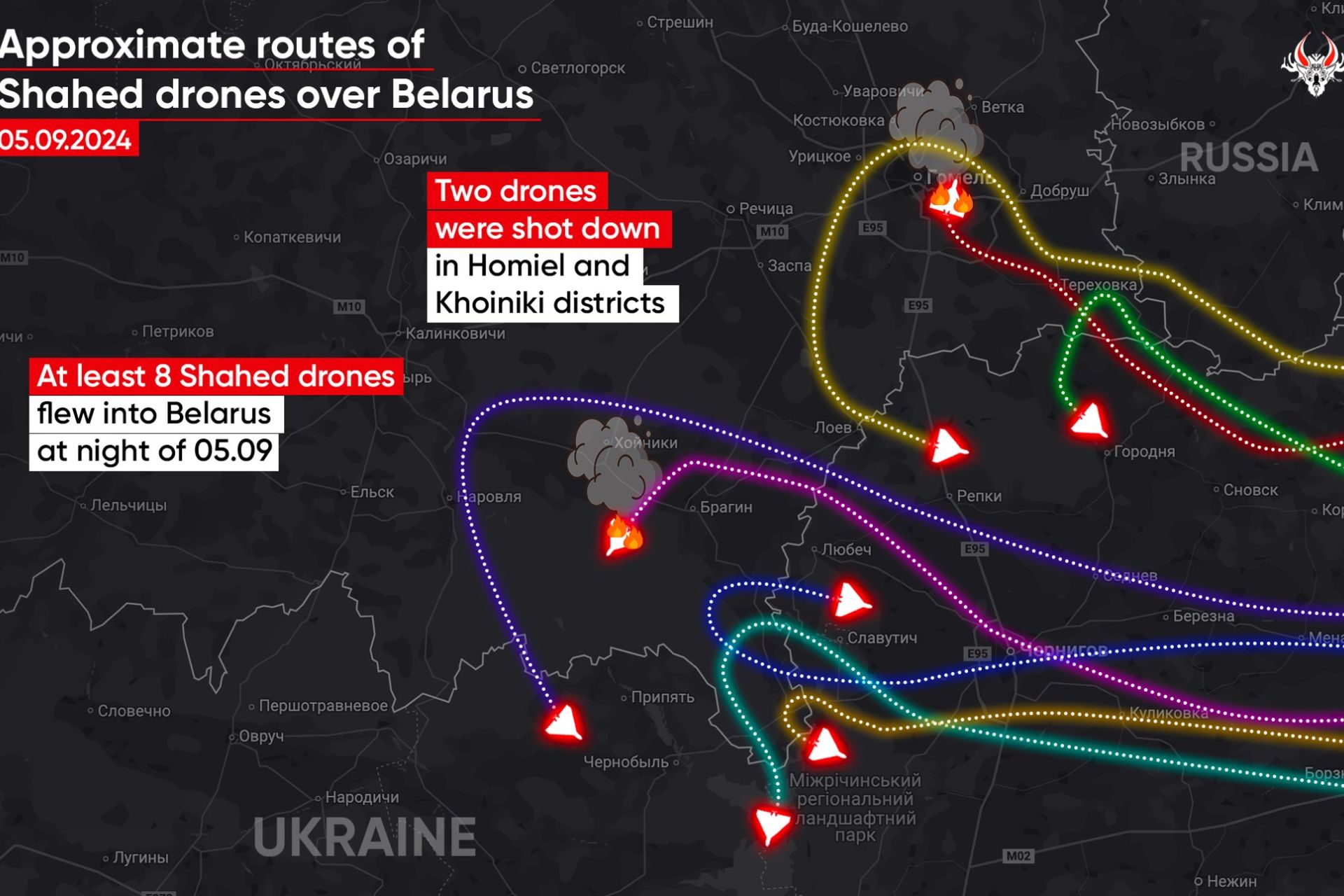Belarusian Air Defense Forces Announce Destruction of Two Russian Shahed Suicide Drones

{loadposition bannertop}
{loadposition sidebarpub}
The Belarusian air defense forces have announced that they shot down two Shahed suicide drones, which entered the country’s airspace during a wave of nighttime attacks against Ukraine. This incident marks the first official acknowledgment by Minsk of the violation of its airspace by drones, while independent monitoring groups had already reported similar incidents in recent months.Follow Army Recognition on Google News at this link
Mikoyan-Gurevich MiG-29 (9-13) of Belarus Air Force, Privolzhsky District, in 2011 (Picture source: Dmitriy Pichugin)
Two main factors contribute to the ongoing challenge: the record-high price of gold in 2023, reaching $2072 per ounce, and the involvement of “Chinese actors” who support and benefit from the activities of illegal miners. The establishment of 120 Chinese trading posts along the Surinamese bank of the Maroni River plays a crucial role in facilitating logistical support and financing for illegal mining operations. These transnational networks not only aid in laundering illegally extracted gold but also bolster the resilience of illegal miners, undermining state efforts and French interests.
In response to the escalating situation, Operation “Crabe” was launched between January 30 and February 8, 2024, deploying tracked vehicles HT 270 for the first time to combat illegal gold mining. Previously, the 3rd Foreign Infantry Regiment (3 REI) relied on Bandvagn 206 (BV 206) vehicles. The decision to integrate HT 270 vehicles, acquired through the Union of Public Procurement Groups and militarized by Technamm, reflects a strategic shift in tackling the challenge posed by illegal mining activities.
The HT 270, equipped with a 169hp diesel engine and capable of carrying up to 16 infantrymen, marks a significant upgrade in mobility and firepower. Its deployment during Operation “Crabe” underscores the military’s commitment to adapt and utilize advanced technology to combat illicit activities effectively. With a maximum speed of 58 km/h and a mount for a 7.62mm MAG 58 machine gun, the HT 270 enhances the operational capabilities of the Armed Forces in confronting the complex and evolving threat posed by illegal gold mining.
Despite these efforts, the persistence of illegal mining activities fueled by high gold prices and transnational networks underscores the need for sustained and coordinated action to address the root causes of the issue and safeguard the environment and local economies in French Guyana.
Map of Shahed 136 flight path during September 05, night created by Belarusian Hajun project ( Picture source: X.com/@Hajun_BY)
Considering the map published by the Hajun group on Twitter, it is noticeable that one of the drones shot down had changed direction and was heading north, in the opposite direction of the others, indicating a potential guidance issue. The destruction of the other drone, however, is more difficult to explain. One might assume that this drone, which had just changed course to strike deeper into Ukrainian territory, was flying too low and posed a threat. Indeed, it remains unlikely that Belarus, on one hand, would order the deployment of troops to reinforce Russian forces, as well as the creation of a joint Russian-Belarusian brigade, while at the same time deliberately shooting down the drones of its ally without a compelling reason.
Furthermore, politically and internationally, Belarusian President Lukashenko is extremely isolated, and taking the risk of directly harming his Russian ally, the only ally in the European zone, is a gamble he cannot realistically take. In conclusion, it is highly improbable that a systematic destruction of drones is being implemented. However, the destruction of drones in the event of a threat is a possibility and seems to be accepted by both sides.

{loadposition bannertop}
{loadposition sidebarpub}
The Belarusian air defense forces have announced that they shot down two Shahed suicide drones, which entered the country’s airspace during a wave of nighttime attacks against Ukraine. This incident marks the first official acknowledgment by Minsk of the violation of its airspace by drones, while independent monitoring groups had already reported similar incidents in recent months.
Follow Army Recognition on Google News at this link
Mikoyan-Gurevich MiG-29 (9-13) of Belarus Air Force, Privolzhsky District, in 2011 (Picture source: Dmitriy Pichugin)
Two main factors contribute to the ongoing challenge: the record-high price of gold in 2023, reaching $2072 per ounce, and the involvement of “Chinese actors” who support and benefit from the activities of illegal miners. The establishment of 120 Chinese trading posts along the Surinamese bank of the Maroni River plays a crucial role in facilitating logistical support and financing for illegal mining operations. These transnational networks not only aid in laundering illegally extracted gold but also bolster the resilience of illegal miners, undermining state efforts and French interests.
In response to the escalating situation, Operation “Crabe” was launched between January 30 and February 8, 2024, deploying tracked vehicles HT 270 for the first time to combat illegal gold mining. Previously, the 3rd Foreign Infantry Regiment (3 REI) relied on Bandvagn 206 (BV 206) vehicles. The decision to integrate HT 270 vehicles, acquired through the Union of Public Procurement Groups and militarized by Technamm, reflects a strategic shift in tackling the challenge posed by illegal mining activities.
The HT 270, equipped with a 169hp diesel engine and capable of carrying up to 16 infantrymen, marks a significant upgrade in mobility and firepower. Its deployment during Operation “Crabe” underscores the military’s commitment to adapt and utilize advanced technology to combat illicit activities effectively. With a maximum speed of 58 km/h and a mount for a 7.62mm MAG 58 machine gun, the HT 270 enhances the operational capabilities of the Armed Forces in confronting the complex and evolving threat posed by illegal gold mining.
Despite these efforts, the persistence of illegal mining activities fueled by high gold prices and transnational networks underscores the need for sustained and coordinated action to address the root causes of the issue and safeguard the environment and local economies in French Guyana.

Map of Shahed 136 flight path during September 05, night created by Belarusian Hajun project ( Picture source: X.com/@Hajun_BY)
Considering the map published by the Hajun group on Twitter, it is noticeable that one of the drones shot down had changed direction and was heading north, in the opposite direction of the others, indicating a potential guidance issue. The destruction of the other drone, however, is more difficult to explain. One might assume that this drone, which had just changed course to strike deeper into Ukrainian territory, was flying too low and posed a threat. Indeed, it remains unlikely that Belarus, on one hand, would order the deployment of troops to reinforce Russian forces, as well as the creation of a joint Russian-Belarusian brigade, while at the same time deliberately shooting down the drones of its ally without a compelling reason.
Furthermore, politically and internationally, Belarusian President Lukashenko is extremely isolated, and taking the risk of directly harming his Russian ally, the only ally in the European zone, is a gamble he cannot realistically take. In conclusion, it is highly improbable that a systematic destruction of drones is being implemented. However, the destruction of drones in the event of a threat is a possibility and seems to be accepted by both sides.





